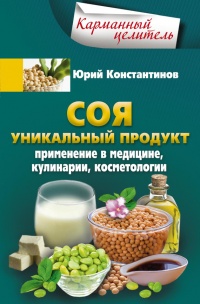Читать книгу "Эффект теломер. Революционный подход к более молодой, здоровой и долгой жизни - Элисса Эпель"
Шрифт:
Интервал:
Закладка:
22. Ward, R. A., “How Old Am I? Perceived Age in Middle and Later Life,” International Journal of Aging and Human Development 71, no. 3 (2010): 167–184.
23. Ibid.
24. Levy, B., “Stereotype Embodiment: A Psychosocial Approach to Aging,” Current Directions in Psychological Science 18, vol. 6 (December 1, 2009): 332–336.
25. Levy, B. R., et al., “Association Between Positive Age Stereotypes and Recovery from Disability in Older Persons,” JAMA 308, no. 19 (November 21, 2012): 1972–1973, doi:10.1001/jama.2012.14541; Levy, B. R., A. B. Zonderman, M. D. Slade, and L. Ferrucci, “Age Stereotypes Held Earlier in Life Predict Cardiovascular Events in Later Life,” Psychological Science 20, no. 3 (March 2009): 296–298, doi:10.1111/j.1467-9280.2009.02298.x.
26. Haslam, C., et al., “ ‘When the Age Is In, the Wit Is Out’: Age-Related Self-Categorization and Deficit Expectations Reduce Performance on Clinical Tests Used in Dementia Assessment,” Psychology and Aging 27, no. 3 (April 2012): 778784, doi:10.1037/a0027754.
27. Levy, B. R., S. V. Kasl, and T. M. Gill, “Image of Aging Scale,” Perceptual and Motor Skills 99, no. 1 (August 2004): 208–210.
28. Ersner-Hershfield, H., J. A. Mikels, S. J. Sullivan, and L. L. Carstensen, “Poignancy: Mixed Emotional Experience in the Face of Meaningful Endings,” Journal of Personality and Social Psychology 94, no. 1 (January 2008): 158–167.
29. Hershfield, H. E., S. Scheibe, T. L. Sims, and L. L. Carstensen, “When Feeling Bad Can Be Good: Mixed Emotions Benefit Physical Health Across Adulthood,” Social Psychological and Personality Science 4, no.1 (January 2013): 54–61.
30. Levy, B. R., J. M. Hausdorff, R. Hencke, and J. Y. Wei, “Reducing Cardiovascular Stress with Positive Self-Stereotypes of Aging,” Journals of Gerontology, Series B: Psychological Sciences and Social Sciences 55, no. 4 (July 2000): P205–213.
31. Levy, B. R., M. D. Slade, S. R. Kunkel, and S. V. Kasl, “Longevity Increased by Positive Self-Perceptions of Aging,” Journal of Personal and Social Psychology 83, no. 2 (August 2002): 261–270.
1. Lapham, K. et al., “Automated Assay of Telomere Length Measurement and Informatics for 100,000 Subjects in the Genetic Epidemiology Research on Adult Health and Aging (GERA) Cohort,” Genetics 200, no. 4 (August 2015): 1061–1072, doi:10.1534/genetics.115.178624.
2. Rode, L., B. G. Nordestgaard, and S. E. Bojesen, “Peripheral Blood Leukocyte Telomere Length and Mortality Among 64,637 Individuals from the General Population,” Journal of the National Cancer Institute 107, no. 6 (May 2015): djv074, doi:10.1093/jnci/djv074.
3. Ibid
4. Lapham et al., “Automated Assay of Telomere Length Measurement and Informatics for 100,000 Subjects in the Genetic Epidemiology Research on Adult Health and Aging (GERA) Cohort.” (See #1 above)
5. Willeit, P., et al., “Leucocyte Telomere Length and Risk of Type 2 Diabetes Mellitus: New Prospective Cohort Study and Literature-Based Meta-analysis,” PLOS ONE 9, no. 11 (2014): e112483, doi:10.1371/journal.pone.0112483; D’Mello, M. J., et al., “Association Between Shortened Leukocyte Telomere Length and Cardiometabolic Outcomes: Systematic Review and Meta-analysis,” Circulation: Cardiovascular Genetics 8, no. 1 (February 2015): 82–90, doi:10.1161/CIRCGENET-ICS.113.000485; Haycock, P. C., et al., “Leucocyte Telomere Length and Risk of Cardiovascular Disease: Systematic Review and Meta-Analysis,” BMJ 349 (2014): g4227, doi:10.1136/bmj.g4227; Zhang, C., et al., “The Association Between Telomere Length and Cancer Prognosis: Evidence from a Meta-Analysis,” PLOS ONE 10, no. 7 (2015): e0133174, doi:10.1371/journal.pone.0133174; and Adnot, S., et al., “Telomere Dysfunction and Cell Senescence in Chronic Lung Diseases: Therapeutic Potential,” Pharmacology & Therapeutics 153 (September 2015): 125–134, doi:10.1016/j.pharmthera.2015.06.007.
6. Njajou, O. T., et al., “Association Between Telomere Length, Specific Causes of Death, and Years of Healthy Life in Health, Aging, and Body Composition, a Population-Based Cohort Study,” Journals of Gerontology, Series A: Biological Sciences and Medical Sciences 64, no. 8 (August 2009): 860–864, doi:10.1093/gerona/glp061.
1. Vulliamy, T., A. Marrone, F. Goldman, A. Dearlove, M. Bessler, P. J. Mason, and I. Dokal. “The RNA Component of Telomerase Is Mutated in Autosomal Dominant Dyskeratosis Congenita.” Nature 413, no. 6854 (September 27, 2001): 432–35. doi:10.1038/35096585.
2. Epel, Elissa S., Elizabeth H. Blackburn, Jue Lin, Firdaus S. Dhabhar, Nancy E. Adler, Jason D. Morrow, and Richard M. Cawthon. “Accel-erated Telomere Shortening in Response to Life Stress.” Proceedings of the National Academy of Sciences of the United States of America 101, no. 49 (December 7, 2004): 17312–15. doi:10.1073/pnas.0407162101.
1. Evercare by United Healthcare and the National Alliance for Caregiving, “Evercare Survey of the Economic Downtown and Its Impact on Family Caregiving” (March 2009), 1.
2. Epel, E. S., et al., “Cell Aging in Relation to Stress Arousal and Cardiovascular Disease Risk Factors,” Psychoneuroendocrinology 31, no. 3 (April 2006): 277–287, doi:10.1016/j.psyneuen.2005.08.011.
3. Gotlib, I. H., et al., “Telomere Length and Cortisol Reactivity in Children of Depressed Mothers,” Molecular Psychiatry 20, no. 5 (May 2015): 615–620, doi:10.1038/mp.2014.119.
4. Oliveira, B. S., et al., “Systematic Review of the Association between Chronic Social Stress and Telomere Length: A Life Course Perspective.” Ageing Research Reviews 26 (March 2016): 37–52, doi:10.1016/j.arr.2015.12.006; and Price, L. H., et al., “Telomeres and Early-Life Stress: An Overview.” Biological Psychiatry 73, no. 1 (January 2013): 15–23, doi:10.1016/j.biopsych.2012.06.025.
5. Mathur, M. B., et al., “Perceived Stress and Telomere Length: A Systematic Review, Meta-analysis, and Methodologic Considerations for Advancing the Field,” Brain, Behavior, and Immunity 54 (May 2016): 158–169, doi:10.1016/j.bbi.2016.02.002.
6. O’Donovan, A. J., et al., “Stress Appraisals and Cellular Aging: A Key Role for Anticipatory Threat in the Relationship Between Psychological Stress and Telomere Length,” Brain, Behavior, and Immunity 26, no. 4 (May 2012): 573–579, doi:10.1016/j.bbi.2012.01.007.
7. Ibid.
8. Jefferson, A. L., et al., “Cardiac Index Is Associated with Brain Aging: The Framingham Heart Study,” Circulation 122, no. 7 (August 17, 2010): 690–697, doi:10.1161/CIRCULATIONAHA.109.905091; and Jefferson, A. L., et al., “Low Cardiac Index Is Associated with Incident Dementia and Alzheimer Disease: The Framingham Heart Study,” Circulation 131, no. 15 (April 14, 2015): 1333–1339, doi:10.1161/CIRCULATIONAHA.114.012438.
Внимание!
Сайт сохраняет куки вашего браузера. Вы сможете в любой момент сделать закладку и продолжить прочтение книги «Эффект теломер. Революционный подход к более молодой, здоровой и долгой жизни - Элисса Эпель», после закрытия браузера.




